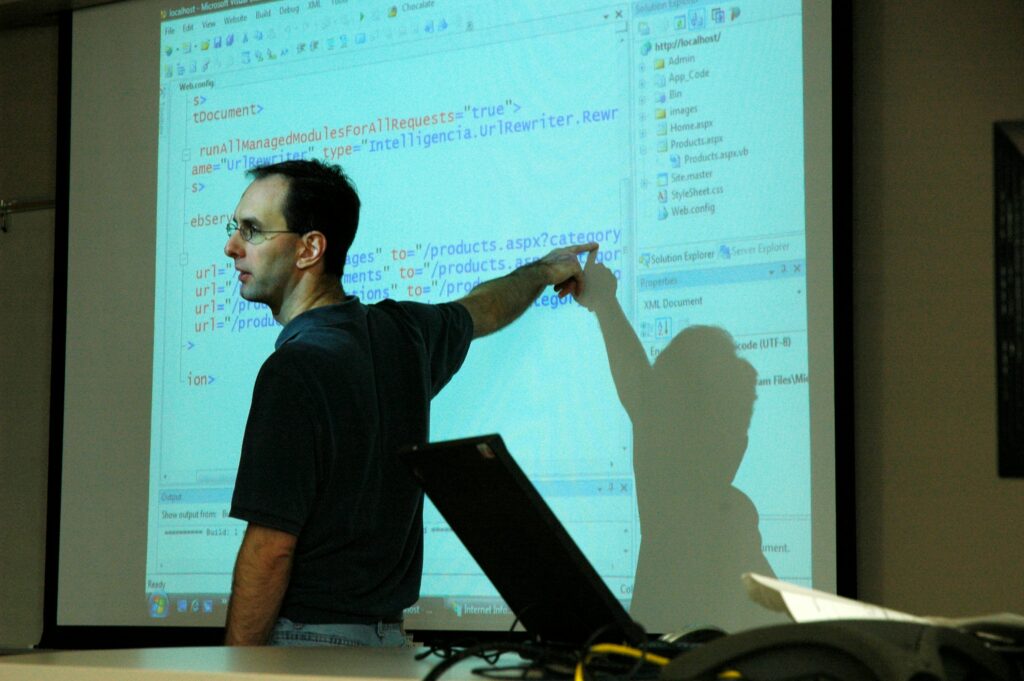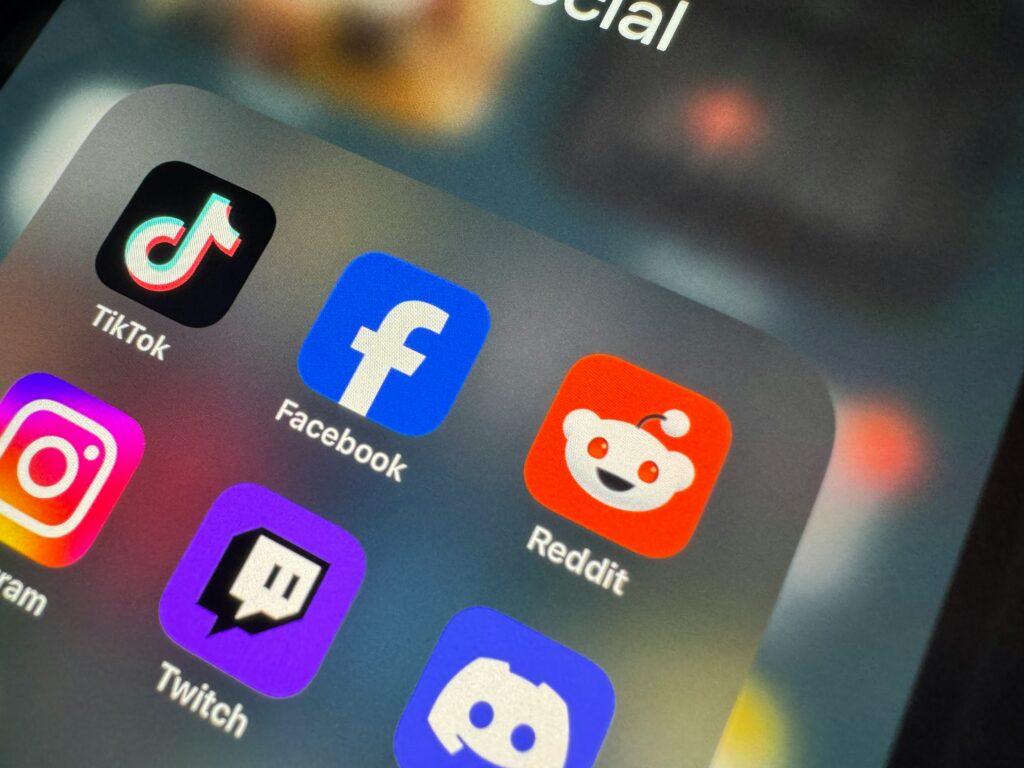Feature Photo by Gabriel Benois on Unsplash
What Does Pedagogy Mean to You?
Pedagogy, for me, is more than just the art or science of teachin. It is a dynamic interaction between the educator and the student that shapes not only the transfer of knowledge but also the development of critical thinking and problem-solving skills. It is an attentive and intentional approach to designing learning experiences that caters to various learning styles and needs. As someone who thrives in structure yet yearns for flexibility, I believe that effective pedagogy balances both, adapting to different individual contexts and preferences.
Reflecting on my journey, the pedagogical strategies that have influenced my learning most significantly involve active engagement and real-world application. For example, project-based learning, where theoretical knowledge meets practical implementation, has been fundamental in deepening my understanding of computer science concepts. It is one thing to learn about algorithms, but it is another to implement them, troubleshoot errors, and see the results unfold in real time. This practical approach fosters a deeper and more intrinsic understanding of complex topics.
In addition, I find value in a blended learning approach—a mix of traditional face-to-face interaction and online resources. This hybrid model allows me to benefit from direct guidance while also exploring subjects at my own pace using online tools and communities. Discussions during lectures provide immediate feedback and deeper insights, while online platforms serve as a repository of knowledge and offer flexibility.
When considering methods and strategies that have worked for me as a learner to create an inclusive and engaging learning environment, they are as follows:
- Active Learning: Encouraging students to engage with material through discussions, projects, and problem-solving activities.
- Differentiated Instruction: Adapting teaching methods to accommodate varied learning preferences—visual, auditory, and kinesthetic—ensuring that every student has the opportunity to thrive.
- Technology Integration: Leveraging digital tools to complement traditional teaching, fostering a blended learning environment that enhances accessibility and engagement.
- Continuous Feedback: Establishing a feedback cycle that not only evaluates performance but also guides and motivates students, fostering a growth mindset.
Networked Pedagogy in Action
Networked pedagogy is a powerful educational approach that emphasizes collaborative learning through digital networks and online communities. The following are the ways that pedagogy can enhance learning experience:
- Access to Diverse Perspectives: Learning alongside individuals from different backgrounds and levels of experience enhances critical thinking and problem-solving skills.
- Collaborative Learning Opportunities: Engaging in discussions, group projects, and knowledge sharing fosters a deeper understanding of concepts.
- Flexibility and Self-Paced Learning: Digital resources allow students to learn at their own pace while staying connected to a supportive learning community.
- Networking and Career Growth: Connecting with professionals and educators online expands opportunities for mentorship, guidance, and career advancement.
Personally, network pedagogy has played a significant role in my learning journey, especially in computer science, where community-oriented problem-solving is a fundamental aspect of growth. Here are two examples of how online connections have contributed to my education:
Example 1: Collaborative Learning Through Open-Source Communities

One of the most valuable aspects of network pedagogy in my experience has been participating in open-source projects on GitHub. Through this platform, I not only contributed to projects but also learned from experienced developers by analyzing their code, understanding best practices, and receiving constructive feedback on my work. Engaging with contributors from around the world helped me improve my coding skills, refine my problem-solving approach, and adopt industry standards that I might not have encountered in a traditional classroom setting. The open-source community embodies the essence of network pedagogy by fostering interactive and collaborative learning.
Example 2: Academic and Professional Support Through Online Forums

Another way network pedagogy has benefited my education is through online discussion forums such as Reddit, Stack Overflow, and Discord. Whenever I encounter a challenging concept—whether it’s a complex machine learning algorithm or a problem in a C++ rendering project—these platforms provide instant access to a global network of students and professionals who share alternative ideas, solutions, and approaches.
For instance, in my CSC421 class, I struggled with implementing propositional logic in Python. Seeking advice through discussion threads and engaging in real-time conversations on Discord helped me refine my understanding of the topic, debug my code more effectively, and complete my assignment with greater confidence.
The Role of Technology in Fostering These Connections

Technology is the backbone of networked pedagogy, enabling seamless communication, collaboration, and resource-sharing. The following are the roles technology play in fostering these connections:
- Seamless Communication: Tools like Discord, Slack, and Microsoft Teams enable instant messaging, voice calls, and discussions for academic collaboration.
- Global Connectivity: Online platforms eliminate geographical barriers, allowing students to interact with experts and peers worldwide.
- Collaboration and Knowledge Sharing: Platforms like GitHub, Google Docs, and Stack Overflow facilitate group projects, open-source contributions, and problem-solving.
- Interactive Learning Tools: Platforms such as Moodle, Blackboard, and Coursera provide structured courses, quizzes, and discussion forums for engagement.
- Real-Time and Asynchronous Learning: Tools like Zoom, Google Meet, and recorded lectures offer flexibility, allowing students to participate in and revisit lessons at their convenience.
- Access to Open Educational Resources (OER): Free learning materials, research papers, and video tutorials make knowledge more accessible.
- Skill Development and Digital Literacy: Engaging with digital tools prepares students for real-world applications and professional work environments.
Learning Theories in Practice
A learning theory that resonates deeply with me is connectivism, which emphasizes learning as a process of creating and nurturing connections between various sources of knowledge, including people, technology, and communities. Unlike traditional theories that focus on the direct transfer of knowledge from teacher to student, connectivism acknowledges the dynamic and networked nature of learning in the digital age.
Connectivism in an Online Learning Environment
In an online learning environment, connectivism thrives through digital networks, social interactions, and continuous access to evolving knowledge. This theory can be applied in several ways:
- Collaborative Learning Through Online Communities: Online discussion forums (e.g., Reddit, Discord, and Stack Overflow) enable students to share ideas, ask questions, and solve problems together, reinforcing the idea that learning happens through connections.
- Use of Open Educational Resources (OERs): Platforms such as Coursera, Khan Academy, and MIT OpenCourseWare provide access to a vast wealth of knowledge, supporting self-directed learning.
- Interactive and Social Media Learning: Platforms like LinkedIn Learning, YouTube, and Twitter tutorials contribute to knowledge acquisition through engagement with experts and peers.
- Real-Time and Asynchronous Networking: Tools such as Zoom, Slack, and Google Meet facilitate direct collaboration, while recorded webinars and podcasts provide opportunities for asynchronous learning.
How Connectivism Shapes My Approach to Learning and Teaching
Connectivism aligns closely with my personal learning style because it thrives in environments where knowledge is shared, adapted, and expanded through interactions with others. It emphasizes learning as a continuous and networked process rather than a static transfer of information. This theory has significantly influenced both how I learn and how I envision my future approach to teaching.
Learning
One of the most impactful ways connectivism has shaped my learning is through open-source contributions on GitHub. Engaging with real-world code, collaborating with experienced developers, and actively contributing to ongoing projects have deepened my understanding of software development in ways that traditional courses alone could not provide.
Additionally, I rely on online forums and discussion groups to explore different perspectives, solve technical problems, and refine my understanding of complex topics. Platforms like Stack Overflow, Reddit, and Discord have been essential in helping me find solutions and gain insights from experts and peers worldwide.
Teaching
As an educator, I would encourage students to develop peer networks and actively engage with digital learning communities. Promoting collaborative learning beyond the classroom would help students gain exposure to diverse perspectives, expand their knowledge, and build valuable connections.
The Role of the Instructor

In an online learning environment, the instructor’s role extends beyond providing content—they serve as facilitators, mentors, and guides who create an engaging and supportive learning experience. Unlike traditional classrooms, where physical presence usually fosters connection, online instructors should leverage technology to cultivate a sense of community, ensure clarity in instruction, and provide timely feedback. They should also be adaptable, addressing the diverse needs and learning styles of students while keeping them motivated in a virtual environment.
Essential Qualities of an Effective Online Instructor
- Clear and Effective Communication: Ability to explain complex concepts in a simple, easy-to-understand manner using multimedia tools such as videos, discussion forums, and interactive activities.
- Responsibility and Availability: Providing prompt feedback and timely responses to student inquiries helps maintain engagement and prevent frustration.
- Technological Proficiency: Familiarity with Learning Management Systems (e.g., Moodle, Blackboard), collaboration tools (e.g., Zoom, Google Meet), and digital resources enhances the learning experience.
- Adaptability and Troubleshooting Skills: Ability to adjust teaching methods based on student needs and resolve technical or engagement-related issues effectively.
- Empathy and Inclusion: Understanding students’ diverse backgrounds, providing necessary accommodations, and ensuring a welcoming and inclusive learning environment.
Personal Experience with Online Instructors
In my experience, the most effective online instructors are those who actively engage with students rather than simply posting lecture slides and assignments. For example, in one of my previous courses, the instructor organized regular live Q&A sessions, provided detailed feedback on assignments, and encouraged forum discussions. This interactive approach made the learning experience more engaging and personalized.
On the other hand, I have also encountered instructors who were largely absent from the course, providing minimal feedback and interaction. In one case, the instructor only uploaded pre-recorded lectures without answering students’ questions or facilitating discussions, making the course feel impersonal and disconnected. Without active guidance, students were left to navigate complex topics on their own, leading to a less effective learning experience.
Exploring Digital Spaces

I am a part of many digital spaces and it has become an integral part of both my learning and social experiences. It offers unprecedented access to knowledge, collaboration, and global communities. Whether engaging in online courses, coding forums, or professional networking platforms, I have found that digital environments provide immense flexibility and diverse perspectives that enrich learning. However, they also come with unique challenges that require mindful navigation.
The following are some benifits and challenges to learning in an digital environment.
Benefits of Learning in Digital Environments
- Accessibility and Flexibility: Online learning allows me to access resources anytime and anywhere, making it easier to balance education with other commitments.
- Diverse Learning Resources: Digital spaces provide access to a wide range of materials, including video tutorials, interactive simulations, and open-source projects.
- Global Networking and Collaboration: Platforms such as GitHub, LinkedIn, and Discord enable me to connect with professionals, participate in discussions, and collaborate on projects beyond geographical limitations.
Learning Challenges in Digital Environments
- Information Overload: The vast amount of available resources can be overwhelming, making it difficult to filter reliable and relevant information.
- Distractions and Self-Discipline: Online learning requires strong time management and self-discipline to stay focused amid digital distractions.
- Technical Barriers: Issues such as unreliable internet connections, software compatibility, and platform navigation can sometimes hinder the learning experience.
